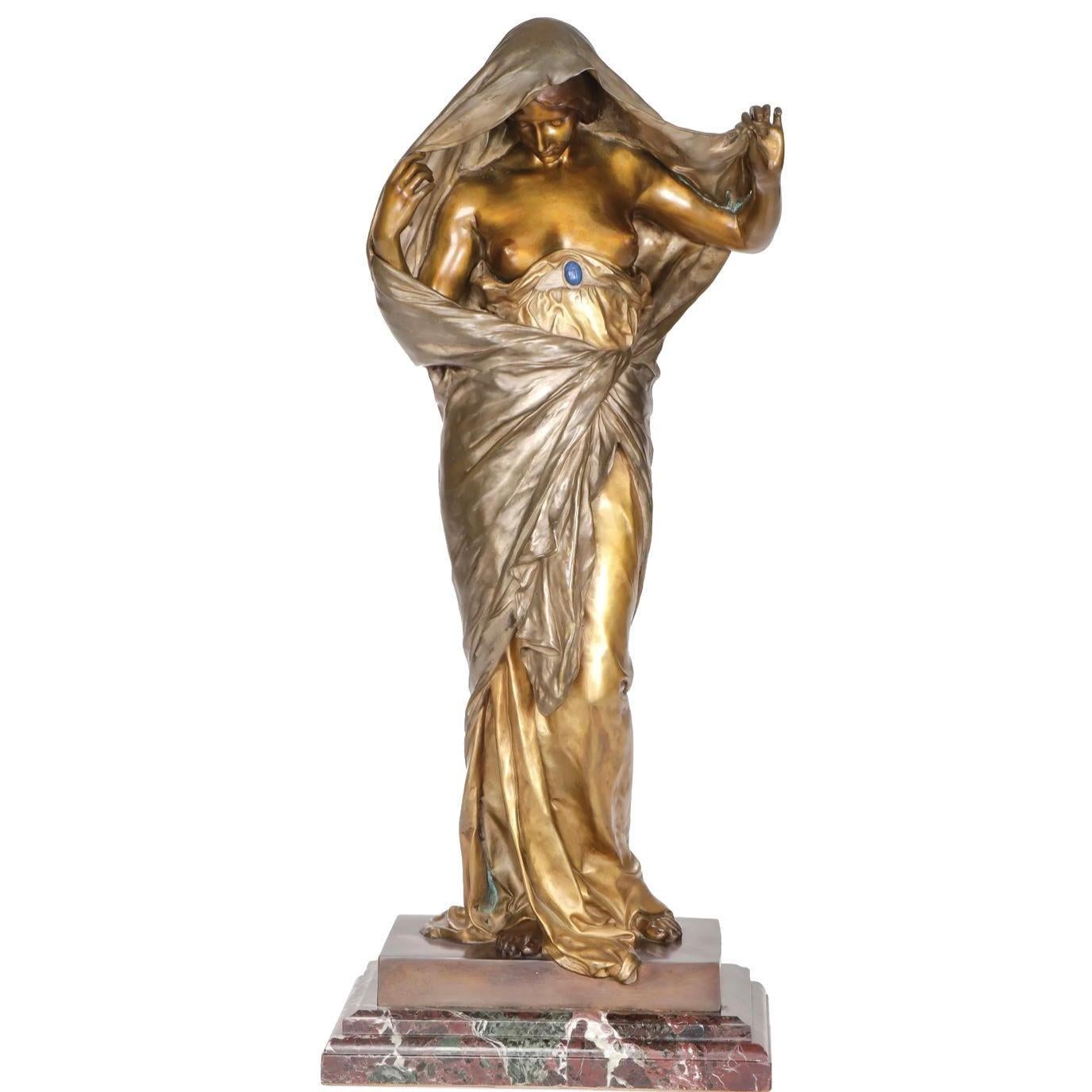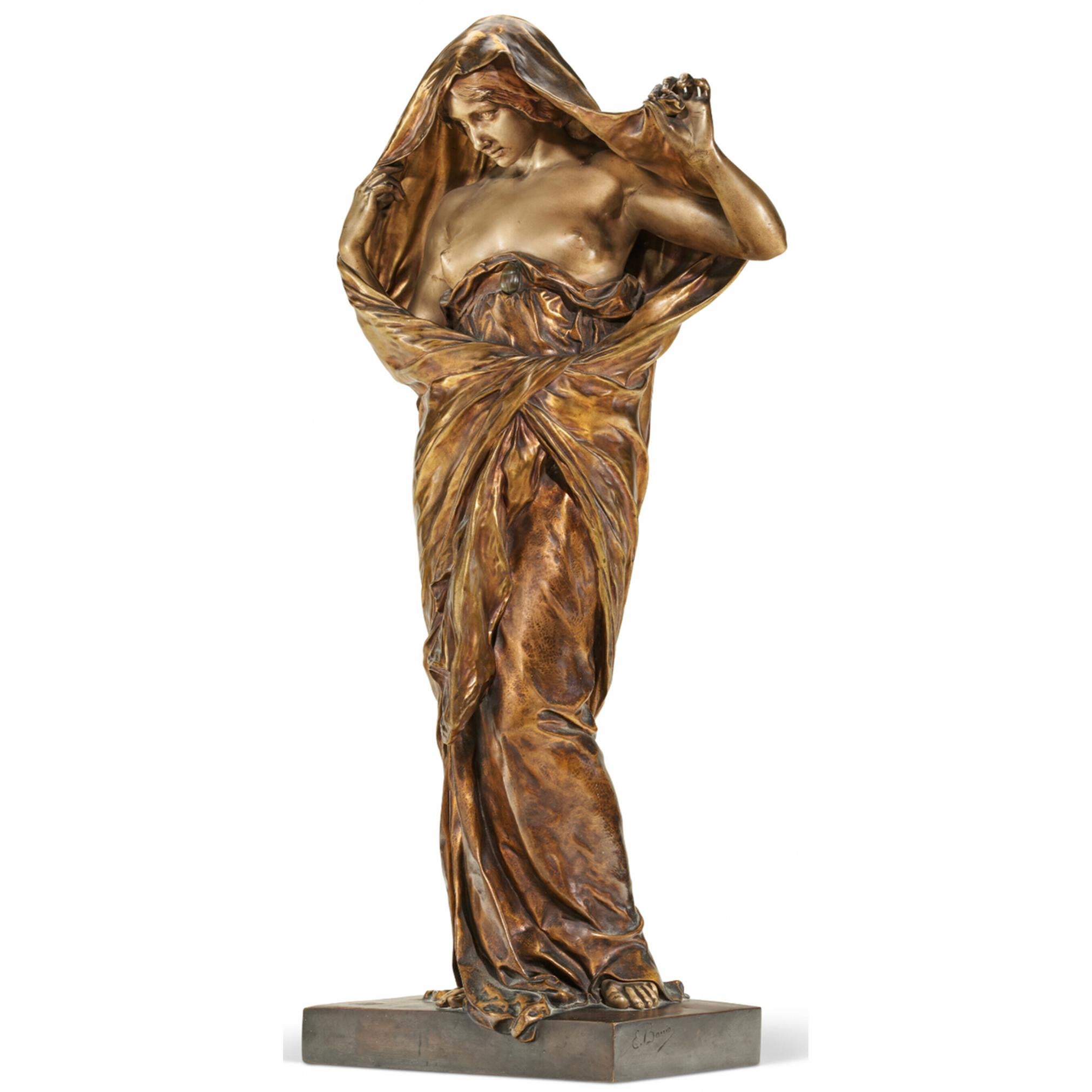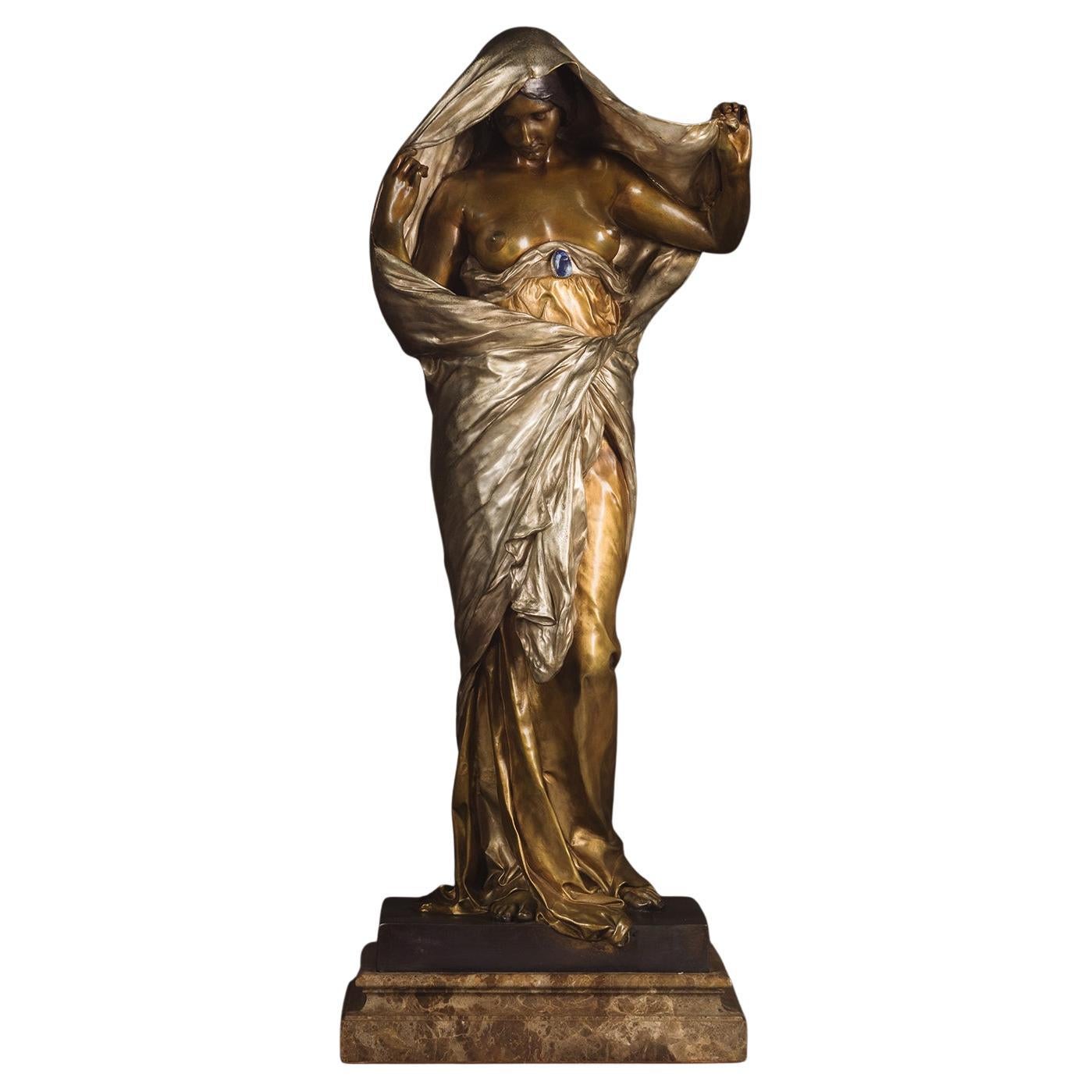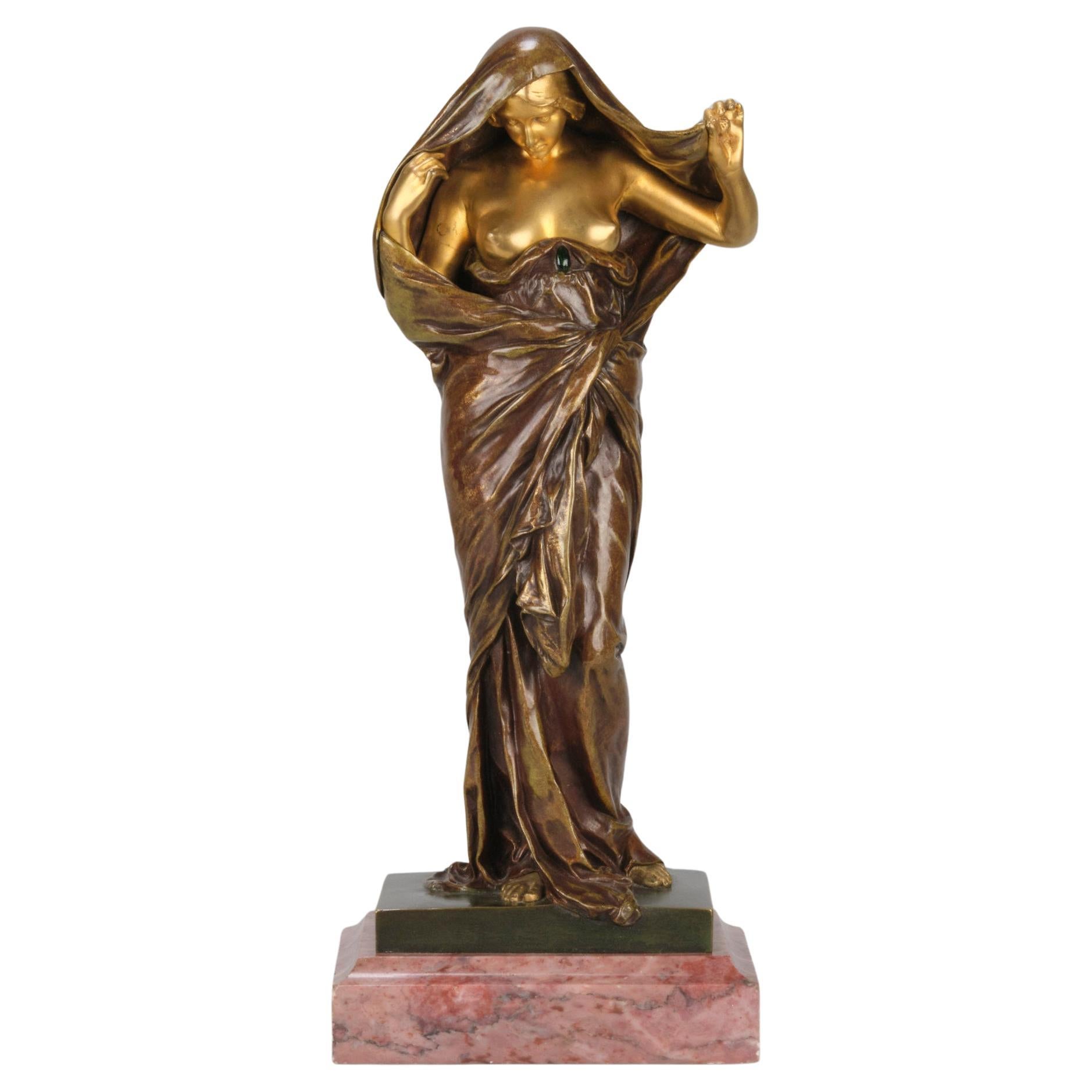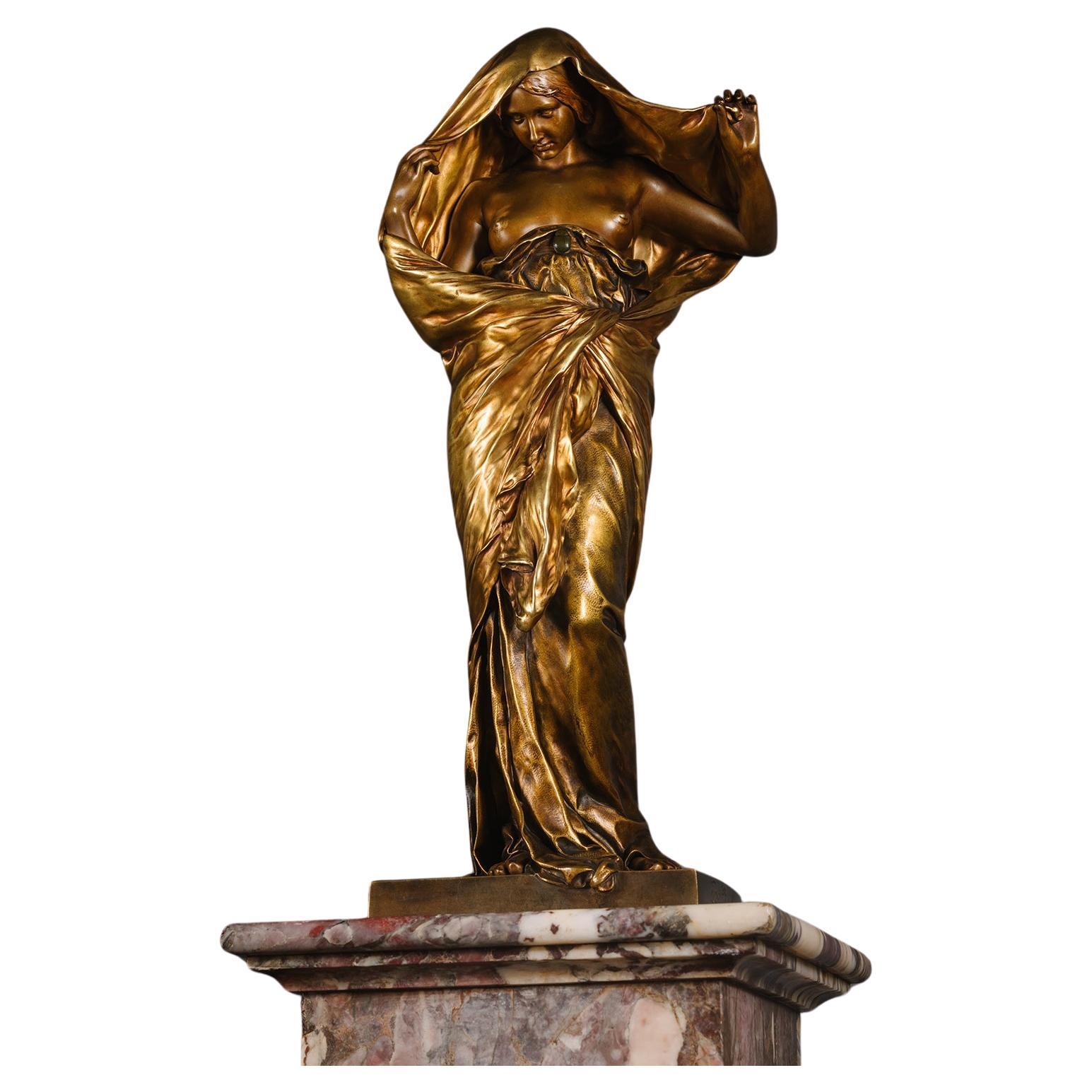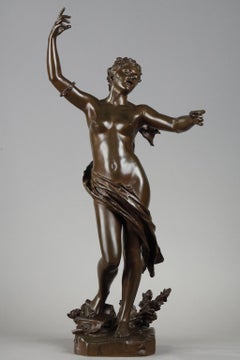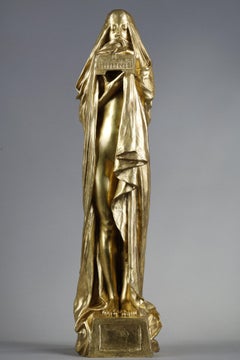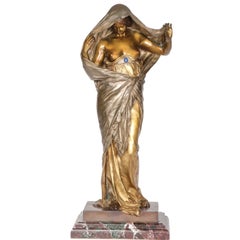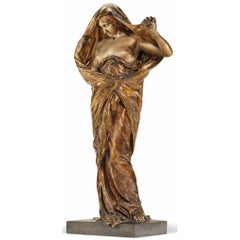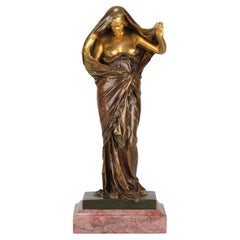Items Similar to Nature unveiling in front of Science
Want more images or videos?
Request additional images or videos from the seller
1 of 20
Louis Ernest BarriasNature unveiling in front of Sciencecirca 1900
circa 1900
$12,520.85
£9,365.50
€10,500
CA$17,298.59
A$18,862.25
CHF 10,010.01
MX$228,038.54
NOK 126,683.93
SEK 116,123.44
DKK 79,992.67
About the Item
Nature unveiling in front of Science
by Louis-Ernest BARRIAS (1841-1905)
Bronze sculpture with triple patina, old-gilt, light brown and dark brown patina.
Signed on the side of the base " E. Barrias "
Cast by " Susse Frères éditeurs Paris " (cachet du fondeur)
Raised on an onyx base
The model of this statue was commissioned in 1889 to decorate the new medical school in Bordeaux. When he had finished the first version in white marble for the school, Barrias designed a second marble and onyx statue in 1899 for the ceremonial staircase of the Conservatoire des Arts et Métiers in Paris.
France
circa 1900
height 27,6 cm
width 10 cm
depth 7 cm
Biography :
Louis-Ernest Barrias (1841-1905) was a French sculptor . He came from a family of artists. His father was a porcelain painter and his older brother, Felix-Joseph Barrias, a recognized painter. Louis-Ernest Barrias entered the School of Fine Arts in Paris in 1858, he abandoned painting to move towards sculpture under the direction of François Jouffroy. In 1864, he won the Prix de Rome, on the theme of "The Foundation of Marseille", and was engaged on the site of the Paris Opera house. He later produced many sculpted works, most of them in marble.
In 1881, Louis-Ernest Barrias was awarded a medal of honor of the fine arts and named knight of the Legion of Honor in 1878, then promoted officer in 1881 and commander in 1900. The artist replaced Auguste Dumont at the Institute in 1884, then succeeded Jules Cavelier as a professor at the School of Fine Arts, where, among his most notable students, there were Victor Ségoffin, Charles Despiau and Paul Landowski.
- Creator:Louis Ernest Barrias (1841 - 1905, French)
- Creation Year:circa 1900
- Dimensions:Height: 10.87 in (27.6 cm)Width: 3.94 in (10 cm)Depth: 2.76 in (7 cm)
- Medium:
- Movement & Style:
- Period:
- Condition:
- Gallery Location:PARIS, FR
- Reference Number:Seller: N.72361stDibs: LU2514216207022
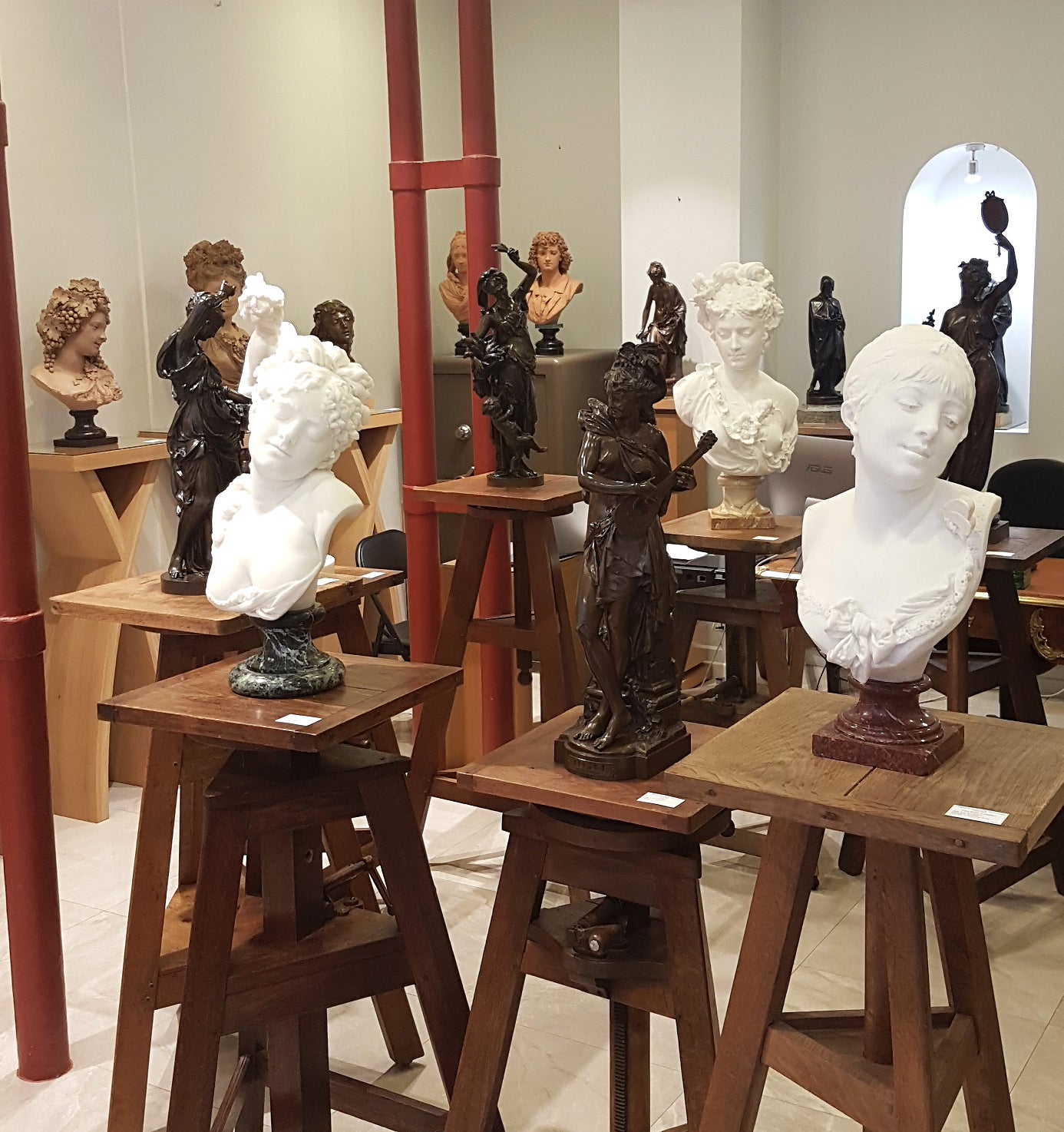
About the Seller
5.0
Recognized Seller
These prestigious sellers are industry leaders and represent the highest echelon for item quality and design.
Established in 1992
1stDibs seller since 2023
11 sales on 1stDibs
Typical response time: 23 hours
- ShippingRetrieving quote...Shipping from: PARIS, France
- Return Policy
More From This Seller
View AllPandora's Secret
Located in PARIS, FR
Pandora's Secret
by Maurice BOUVAL (1863-1916)
Sculpture made in bronze with a nuanced dual patina, light –and dark brown
signed on the base " M. Bouval "
old edition cast
presente...
Category
Early 1900s Art Nouveau Nude Sculptures
Materials
Bronze
The Birth of Venus
By Albert-Ernest Carrier-Belleuse 1
Located in PARIS, FR
The Birth of Venus
by Albert-Ernest CARRIER-BELLEUSE (1824-1887)
Bronze sculpture with nuanced dark brown patina
signed "A. Carrier-Belleuse"
cast by Denière
France
circa 1870
he...
Category
Late 19th Century French School Figurative Sculptures
Materials
Bronze
The Song
By Félix Charpentier
Located in PARIS, FR
"The Song" by Félix Charpentier (1858-1924)
A very fine bronze sculpture with nuanced dark brown patina
Signed "Fx. Charpentier"
Cast by "E. Colin & Cie Paris"
France
around 1900
he...
Category
Early 1900s Art Nouveau Figurative Sculptures
Materials
Bronze
The Secret
Located in PARIS, FR
The Secret
by Pierre-Félix FIX-MASSEAU (1869-1937)
Sculpture in bronze with a gilded patina
Signed on the side " Fix-Masseau "
Cast by " Siot-Paris " (with the foundry mark)
France...
Category
Late 19th Century Art Nouveau Figurative Sculptures
Materials
Bronze
Young girl from Bou-Saada
By Louis Ernest Barrias
Located in PARIS, FR
Young girl from Bou-Saada
by Louis-Ernest BARRIAS (1841-1905)
Bronze sculpture with a nuanced dual patina
with blue enamelled jewels
Signed on the base " E. Barrias "
Cast by " Suss...
Category
Early 20th Century French School Figurative Sculptures
Materials
Bronze
Susanna
By Albert-Ernest Carrier-Belleuse
Located in PARIS, FR
Susanna
by Albert-Ernest Carrier-Belleuse (1824-1887)
Bronze sculpture with nuanced brown patina
signed to the side " A. Carrier "
old period cast
France
circa 1860
height 62 cm
...
Category
1860s French School Figurative Sculptures
Materials
Bronze
You May Also Like
Louis Ernest Barrias Nature Revealing Herself
By Louis Ernest Barrias
Located in Dallas, TX
Louis Ernest Barrias (French 1841-1905)
Nature Revealing Herself
La Nature se dévoilant devant la Science
Gilt, and silver patinated bronze with blue glass scarab
Signed on base “E...
Category
Early 1900s Art Nouveau Figurative Sculptures
Materials
Bronze
Nature revealing herself before Science bronze nude figural statue
Located in New York, NY
La Nature se dévoilant devant la Science (Nature revealing herself before Science)
Nature unsheathes herself from a golden cloak to reveal her chest with a beetle resting on her ribs.
Artist : LOUIS-ERNEST BARRIAS (FRENCH, 1841-1905)
inscribed 'E. Barrias' (to right side of base),
Susse Frères foundry cachet (to reverse) and with inscription 'Susse Fres...
Category
19th Century Nude Sculptures
Materials
Bronze
'La Nature se dévoilant devant la Science' by Louis-Ernest Barrias
By Louis Ernest Barrias
Located in Brighton, West Sussex
A Bronze Figure of 'La Nature se dévoilant devant la Science' by Louis-Ernest Barrias.
Inscribed 'E. Barrias' and with Susse Frères foundry cachet and further Susse inscription.
S...
Category
Antique Early 1900s Figurative Sculptures
Materials
Bronze
Late 19th Century Art Nouveau Sculpture "Nature Unveiling" by Ernst Barrias
Located in London, GB
Wonderful late 19th Century Art Nouveau French bronze figure of a seductively draped female figure representing, in allegorical form, Nature revealing her secrets to Science, a fitti...
Category
Antique Late 19th Century French Art Nouveau Figurative Sculptures
Materials
Marble, Bronze
Bronze Figure of 'La Nature Se Dévoilant Devant La Science'
By Louis Ernest Barrias
Located in Brighton, West Sussex
Bronze figure of 'La Nature se dévoilant devant la Science' by Louis-Ernest Barrias.
Inscribed 'E. Barrias' and with Susse Frères foundry cachet and further Susse inscription.
Thi...
Category
Early 20th Century French Figurative Sculptures
Materials
Bronze
French Art Nouveau Bronze
Located in Berlin, DE
Bronze
72 cm
signed
Height: 72 cm.
Base diameter: approx. 22 cm.
Signed "E. Drouot". Stamped "BD Fondeur, Paris". Plaque engraved "Hebe Par Drouot (Hors Concours)".
Bronze, cast, ...
Category
Late 19th Century Art Nouveau Figurative Sculptures
Materials
Bronze
More Ways To Browse
Antique Staircase
Antique Bronze Nude
Paris Opera House
Art Nouveau Bronze Nude
Onyx Statue
Onyx Marble Statue
Shantell Martin
Sheep Cow Painting
Sidney Thomas Cooper Painting Of Cows
Soccer Poster
Storm Trooper
Submarine Painting
Tintin Original
Tyrone Power
Vintage Air Canada Posters
Vintage Aperitif Posters
Vintage Bardot Dress
Vintage Caboose
